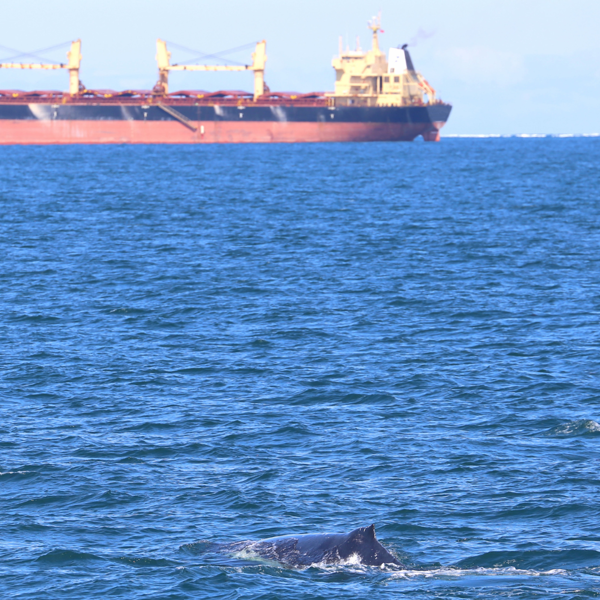On 2 July IMCA’s first-ever “Supply Chain and Circular Economy in Offshore Contracting” meeting was held in Amsterdam. The event explored how circular thinking can reshape offshore industries and supply chains, with a particular focus on design, reuse, sustainable shipbuilding and decommissioning.
Kicking off the day, Rosanne van Houwelingen from Netherlands Maritime Technology highlighted the importance of mapping decommissioning activities to identify interdependencies between stakeholders. She made the case for circular supply chains as a pathway to better material use, increased reuse, and responsible ownership across the lifecycle of offshore assets.
She addressed the regulatory challenges of ship recycling, referencing the 2018 EU Ship Recycling Regulation, which mandates that recycling may only take place in approved facilities meeting strict environmental and labour safety standards. While vessels are often finished in the Netherlands, they tend to be decommissioned in countries such as Bangladesh and India, raising serious questions about consistent enforcement and human rights.
Her call to action included rethinking ownership models, proposing that European shipbuilders retain full lifecycle responsibility, and the development of a certified second-hand market for refurbished parts. Currently, second-hand components are undervalued, but a robust certification scheme could shift this mindset, supporting circularity while maintaining quality and safety.
She also introduced the Circles of Life project, which is developing three key tools to advance circular shipbuilding: a Shipyard Environmental Performance Index (SEPI), a Ship Lifecycle Passport (SLP), and a Ship Circular Materials Passport (SCMP). These initiatives aim to close the information gap surrounding ship components, materials, and lifecycle status, while improving decision-making and promoting reuse.
However, she noted practical challenges, including traceability of materials, unclear passport ownership during resale, and gaps in supplier data, all of which require new thinking and collaboration across the supply chain.
The next session featured Cristina Cerrito and Pierluigi Nunzi from Saipem, who outlined how circularity is being embedded into their operations using the “10 R-ladder” model. Moving beyond the traditional “reduce, reuse, recycle” framework, they introduced strategies such as refuse, rethink, repair, refurbish, remanufacture, repurpose, and recover, shifting focus to earlier stages in the asset lifecycle and promoting systemic change.
They argued that circularity is no longer about end-of-life management but a strategic shift requiring changes in design, behaviour, business models, and technology. Their work at Saipem reflects this transition, with a clear emphasis on regeneration and long-term value retention.
Legal frameworks and policy implications were addressed by Dr Klaas Hendrik Eller, who examined the risks and opportunities linked to circular value chains. Compliance, reputation, and investor confidence are all influenced by how organisations respond to global regulatory trends. He stressed that local laws must reflect global realities, pointing to past events such as the Suez Canal blockage and the Rana Plaza collapse as examples of how international incidents influence supply chain governance.
Dr Eller emphasised the importance of transparency and traceability, urging the adoption of governance models that promote human rights, environmental protection, and a level playing field in global commerce. For companies, he said, effective governance structures are vital tools for both risk management and competitive advantage.
The morning concluded with a lively panel discussion, bringing together the day’s speakers to answer audience questions. Topics ranged from how newcomers to circularity can get started, to detailed debate around passport ownership and the role of clients in enabling circular practices.
After lunch, attendees heard from Michiel Valee of Dockflow, who showcased how AI is modernising logistics. By using real-time data and predictive analytics, companies can overcome growing bureaucracy and complexity to achieve greater visibility and responsiveness across supply chains.
A final open discussion explored the audience’s views on circularity. Many acknowledged the gap between theory and practice, with barriers including client demands, regulatory permissions, and intellectual property concerns. Despite this, there was clear enthusiasm for knowledge sharing and collaboration but with an understanding that competitive pressures remain.
The day closed with an interactive workshop led by Cristina Cerrito, where attendees tackled a simulated circularity challenge: to design and build an offshore carbon capture storage (CCS) plant and introducing circular options and transforming its linear supple chain to a circular one. Teams worked together to apply the day’s insights to a hypothetical business scenario, before presenting their solutions. The winning team was announced at the end of the session.
This inaugural event sparked important conversations and demonstrated growing momentum behind circular thinking in offshore supply chains. As the industry evolves, collaboration, innovation, and commitment to lifecycle thinking will be critical in making circularity a reality.








